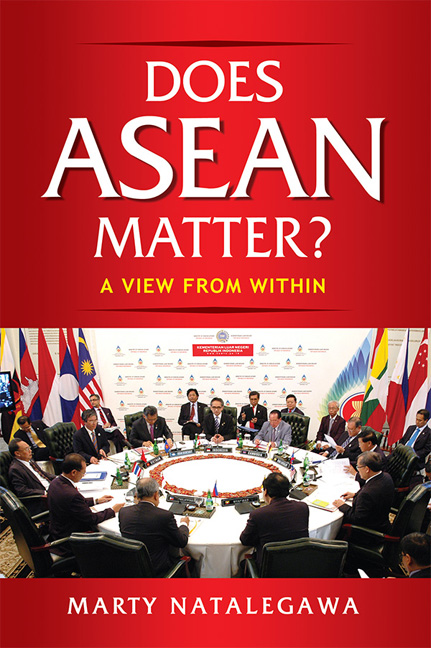Book contents
- Frontmatter
- Dedication
- Contents
- Introduction
- 1 Statecraft and Diplomacy in a World Transformed: 1967–2017
- 2 Southeast Asia: From Trust Deficit to Strategic Trust
- 3 ASEAN and the Region: From Cold War Pawn to ASEAN Centrality
- 4 From State-centric to People-centred ASEAN
- 5 ASEAN: Wither or Prosper?
- Appendix 1 Guidelines for the Implementation of the DOC
- Appendix 2 Declaration of the East Asia Summit on the Principles for Mutually Beneficial Relations
- Appendix 3 Statement of Asean Foreign Ministers on Asean's Six-Point Principles on the South China Sea
- Index
- About the Author
- Plate section
- Frontmatter
- Dedication
- Contents
- Introduction
- 1 Statecraft and Diplomacy in a World Transformed: 1967–2017
- 2 Southeast Asia: From Trust Deficit to Strategic Trust
- 3 ASEAN and the Region: From Cold War Pawn to ASEAN Centrality
- 4 From State-centric to People-centred ASEAN
- 5 ASEAN: Wither or Prosper?
- Appendix 1 Guidelines for the Implementation of the DOC
- Appendix 2 Declaration of the East Asia Summit on the Principles for Mutually Beneficial Relations
- Appendix 3 Statement of Asean Foreign Ministers on Asean's Six-Point Principles on the South China Sea
- Index
- About the Author
- Plate section
Summary
Does ASEAN Matter?
The world that greeted the Association of Southeast Asian Nations (ASEAN) upon its formation in 19671 differs sharply from the one that prevails today — fifty years after ASEAN's inception. And, more likely than not, the world in the next fifty years will bear little resemblance to the one which is current.
Indeed, for the future, as it is sometimes said, the only certainty is uncertainty itself. Change is permanent.
This book is about the present and future relevance of ASEAN. It is about ASEAN's quest for security and prosperity in a region marked by complex dynamics of power. Namely, the interplay of relations and interests among countries — large and small — which provide the settings within which ASEAN must deliver on its much-cited leadership and centrality in the region.
How can ASEAN build upon its past contributions to the peace, security and prosperity of Southeast Asia, to the wider East Asia, the Asia-Pacific and the Indo-Pacific regions? More fundamentally, and a sine qua non, how can ASEAN continue to ensure that peace, security and prosperity prevail in its own region: Southeast Asia? And, equally central, how can ASEAN become more relevant to the peoples of ASEAN, such that its contributions can be genuinely felt in making better the lives of its citizens?
Will ASEAN Continue to be Relevant in Facing Future Challenges and Opportunities?
The milieu within which ASEAN finds itself as it commemorates fifty years of its existence is certainly a radically complex one, marked by at least two overriding qualities: connectivity and change.
More than ever, ASEAN confronts an interconnected world in which the delineation between local, national, regional and global issues is increasingly blurred. It is facing a milieu in which economic, political and social issues increasingly converge. It is navigating a world in which the indivisibility of peace, security and prosperity holds a greater truth than ever.
Yet, recent developments suggest that the apparent reality of an interconnected world does not necessarily translate into a world with a greater sense of unity of purpose and cohesion. While the past fifty years have witnessed a tremendous proliferation of formal interstate institutions and organizations, regional and global alike, all committed to manage, facilitate and, even, promote global and regional cooperation, signs of unrest and dissatisfaction currently abound.
- Type
- Chapter
- Information
- Does ASEAN Matter?A View from Within, pp. 1 - 5Publisher: ISEAS–Yusof Ishak InstitutePrint publication year: 2018

